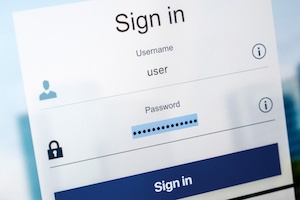Harness the Power of Social Media in Litigation
 A wealth of information is stored on social media sites, making them excellent sources of evidence. This article highlights examples of the myriad ways that social media can be used in litigation to uncover hidden assets, calculate damages, establish securities law violations, locate individuals, and reveal feigned injuries.
A wealth of information is stored on social media sites, making them excellent sources of evidence. This article highlights examples of the myriad ways that social media can be used in litigation to uncover hidden assets, calculate damages, establish securities law violations, locate individuals, and reveal feigned injuries.
Uncovering hidden assets: Parties may try to hide assets in a variety of contexts, including fraud investigations, shareholder disputes, and marital dissolution cases. Social media posts may reveal the existence and whereabouts of hidden assets.
For example, a divorcing spouse might post a photo of a new luxury car or vacation home, or a business might advertise the grand opening of a new location on Facebook while the controlling shareholder testifies in court that the business is struggling.
Calculating damages: Suppose one company sues another for patent infringement, claiming lost profits damages. However, a review of social media posts might reveal numerous customer complaints about defects in the plaintiff’s products. These posts might suggest an alternative explanation for its financial losses that are unrelated to the defendant’s alleged infringement.
Establishing securities law violations: Social media can form the basis of a fraudulent misrepresentation claim. For example, an investment firm might brag on Twitter or Facebook that it can double or triple your initial investment.
Likewise, social media sources may reveal a potential violation of Regulation Fair Disclosure (FD), which prohibits public companies from providing certain individuals or entities, such as securities analysts or institutional investors, with important nonpublic information before sharing the information with the general public.
For example, in 2012, Netflix’s CEO posted a message to his personal Facebook page congratulating his team on surpassing one billion hours in monthly viewing. This post violated Reg FD because the company failed to simultaneously announce the achievement through public channels.
Locating individuals: A person may “check in” at a restaurant on Facebook or post a photo that contains embedded location data. This information can be useful in serving process or contacting potential witnesses. It may also be used to disprove a party’s claim that he or she was in a particular place at a particular time.
Revealing feigned injuries: Social media can be a great way to catch a party engaged in activities that belie the seriousness of his or her injuries. For example, an injured party might be tagged in a Facebook post showing her dancing or rock climbing with friends the week after a work-related accident.
As these examples demonstrate, social media evidence can be an indispensable part of the litigation process. But exercise caution: Gathering social media also raises a variety of discovery challenges involving privacy, authenticity, and reliability.








